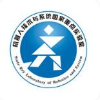The adoption of the Prospective Payment System (PPS) in the UK National Health Service (NHS) has led to the creation of patient groups called Health Resource Groups (HRG). HRGs aim to identify groups of clinically similar patients that share similar resource usage for reimbursement purposes. These groups are predominantly identified based on expert advice, with homogeneity checked using the length of stay (LOS). However, for complex patients such as those encountered in burn care, LOS is not a perfect proxy of resource usage, leading to incomplete homogeneity checks. To improve homogeneity in resource usage and severity, we propose a data-driven model and the inclusion of patient-level costing. We investigate whether a data-driven approach that considers additional measures of resource usage can lead to a more comprehensive model. In particular, a cost-sensitive decision tree model is adopted to identify features of importance and rules that allow for a focused segmentation on resource usage (LOS and patient-level cost) and clinical similarity (severity of burn). The proposed approach identified groups with increased homogeneity compared to the current HRG groups, allowing for a more equitable reimbursement of hospital care costs if adopted.
翻译:在联合王国国家卫生署(NHS)采用前景付款系统(PPS)后,建立了称为健康资源小组的病人群体。 HRG旨在确定临床上相似的病人群体,为偿还目的共用类似的资源。这些群体主要是根据专家意见确定的,使用停留时间对同质性进行检查(LOS)。然而,对于在烧伤护理中遇到的病人等复杂病人来说,LOS并不是资源使用的一个完美的代理物,导致不完全的同质性检查。为了改善资源使用和严重程度的同质性,我们提议了一个数据驱动模型,并列入病人费用计算标准。我们调查以数据驱动的方法,考虑额外的资源使用措施是否会导致一个更全面的模式。特别是,采用了成本敏感的决策树模式,以确定重要性的特点和规则,以便能够对资源使用(LOS和病人水平费用)和临床相似性(烧伤程度)进行集中分块。拟议的方法,确定了与目前的HRG小组相比,同质性增加的群体,这样就可以更公平地报销医院护理费用。






